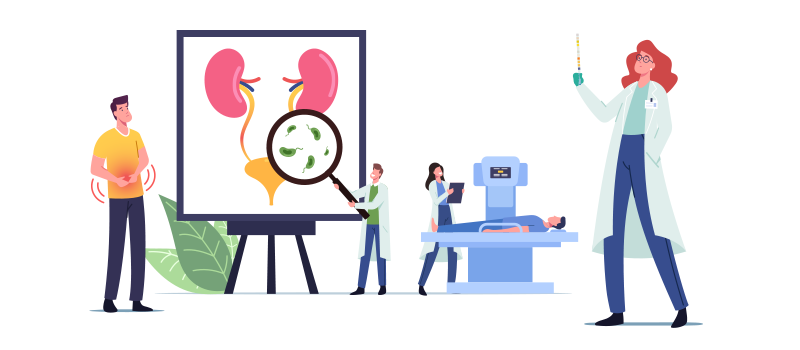What’s the Buzz
The Bee Healthy Blog
Which STDs Can Be Tested For at Home vs. a Lab or Clinic?

According to the World Health Organization (WHO), more than 1 million sexually transmitted infections (STIs) are acquired every day around the world. Sexually transmitted infections occur when bacteria, viruses, fungi, or parasites enter the body through sexual contact. In some people, they cause only mild symptoms or no symptoms. In others, sexually transmitted infections cause severe symptoms and serious health problems called sexually transmitted diseases (STDs).
STIs and STDs spread among sex partners through sexual activity (vaginal, anal, and oral sex). They can also spread through intimate physical contact (skin-to-skin contact), such as during kissing, although this is less common. Having multiple sexual partners increases your risk of acquiring sexually transmitted infections (STIs).
You may have a sexually transmitted infection yet have no symptoms. In such a case, you could unknowingly transmit the infection to your sex partner. That’s why it is important to get STD testing done at least once a year if you are sexually active, more often if you have risk factors. If you receive a positive diagnosis, you should know that most STDs are treatable with medications, and some can even be fully cured.
Many people wonder if it is possible to test for STDs at home. Please continue reading to learn more about which STD tests can be done at home versus a laboratory or clinic.
What are some common sexually transmitted diseases (STDs)?
Bacterial vaginosis
This condition is the result of an imbalance between good and bad bacteria in the vagina. It is very common in women of childbearing age (15-44 years). Bacterial vaginosis increases the chances of acquiring sexually transmitted diseases (STDs).
Chlamydia
This is a common bacterial sexually transmitted infection that can affect both men and women. It spreads through vaginal, oral, and anal sex. Pregnant women can pass the infection to the baby during childbirth.
Gonorrhea
This is a bacterial STI that is common in sexually active teenagers and young adults under the age of 25 years. Risk factors for gonorrhea include having multiple partners or having sex without condoms.
Genital herpes
Herpes is a sexually transmitted infection caused by the herpes simplex virus type 1 and type 2. HSV-1 causes oral herpes (cold sores or fever blisters). HSV-2 causes genital herpes. You can get genital herpes by having vaginal, oral, or anal sex with an infected person. An HSV-1 infection can also spread from the mouth to the genital area through oral sex.
Human papillomavirus
Some strains of human papillomavirus (HPV) cause genital warts. Others can lead to a higher risk of certain cancers such as cervical cancer. According to the Centers for Disease Control and Prevention (CDC) fact sheet, HPV is the most common STD in the US. There is an HPV vaccine available to protect against this disease.
Trichomoniasis
This is a sexually transmitted infection caused by a parasite. It causes painful urination, foul-smelling vaginal discharge, and itching in the genital area in women. However, men with trichomoniasis usually do not experience any symptoms.
New infections of other STIs like syphilis and HIV are less common but can be more serious than some of the more common STDs.
How do doctors diagnose STDs?
Doctors diagnose sexually transmitted diseases based on symptoms, sexual history, and laboratory tests, including blood tests, urine samples, and swabs from genital sores and bodily fluids.
How can I test myself for STDs at home?
There are several at-home STD test kits available, such as LetsGetChecked, EverlyWell, myLAB Box, Nurx, and QuestDirect. These kits are designed for self-collection at home. They can test for many STDs like bacterial vaginosis, chlamydia, gonorrhea, herpes, HPV, trichomoniasis, syphilis, hepatitis C, and HIV. You need to collect the sample at home per the instructions in the kit and send it off to the laboratory. The results are typically available in 2-7 days.
What are the pros and cons of testing for sexually transmitted infections at home?
If you have signs and symptoms of an STI, such as an unusual discharge or bleeding from the vagina, painful sex, pain or burning during urination, sores or bumps in the genital area, discharge from the penis, swollen lymph nodes, fever, or skin rash, it’s important to get tested and seek treatment or cure.
The advantages of doing screening tests at home for sexually transmitted diseases are that you can do the tests discreetly in the comfort of your home. Also, you can test for multiple STIs/STDs with one test kit.
The potential disadvantages of testing for STDs at home are delays in receiving or sending the tests and errors in performing the tests properly or interpreting the results. Also, if the results are positive, you will not have immediate access to the right treatment.
When to do an STD test at home versus a lab or clinic?
You can consider doing home-to-lab tests for STDs if you are doing the tests:
- Out of curiosity.
- After unprotected sex.
- Before having sex with a new partner.
- Before stopping use of latex condoms with your current partner.
- To confirm if a previously diagnosed STI has cleared.
You should go in to see your healthcare provider for in-office STD tests if:
- You have any severe or unusual symptoms.
- A recent or current partner has received positive results on STI tests.
- You haven’t had in-office STD tests in more than a year.
Why is STD testing important?
Sexually transmitted diseases (STDs) can affect both men and women, but they often have more serious consequences on women’s health, including:
- Permanent damage to the reproductive organs, making it difficult to get pregnant in the future.
- An increased risk of ectopic pregnancy (implantation of the embryo outside the womb).
- An increased risk of premature delivery or low-birth-weight babies in pregnant women with STIs.
- Risk of a serious condition called pelvic inflammatory disease (PID) if STDs are left untreated.
There are various treatment options available for sexually transmitted diseases. Many STDs can be cured, especially if they are diagnosed and treated in the early stages. Two of the main things you can do to reduce your risk of acquiring these serious health conditions is practicing safer sex and getting tested before having sex with new partners.
References:












SOCIAL